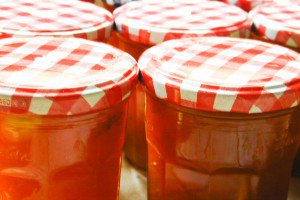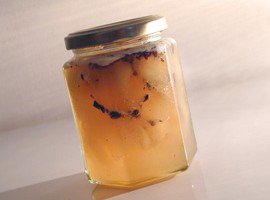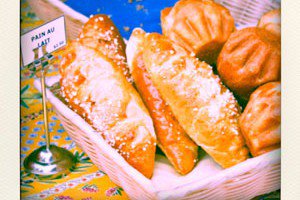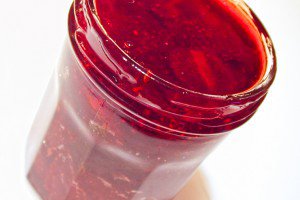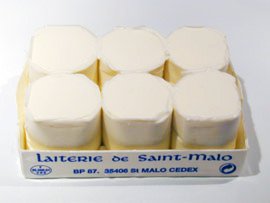
[Little Swiss Cheeses]
Un petit suisse, literally “a little Swiss”, is a fresh cow’s milk cheese that’s shaped like a small cylinder.
The story, I gather, is that it was originally invented in Normandy in the 1850’s, at a dairy farm owned by a Madame Hérould. One of her garçon-vachers (an employee who tends to the cows, literally a cowboy), who was from Switzerland, suggested she enrich her cheese with cream, like they did in his home country. She followed his advice to excellent results, and named the cheese in his honor. One Monsieur Gervais got interested; he helped develop the production process, and had the cheese shipped to Paris on the newly created train line, to be sold extra-fresh every morning.
Originally, a white strip of paper was wrapped around each cylinder to hold its shape, and the petits suisses were packed six by six in little wooden boxes. The contemporary version of the packaging has each petit suisse sit in its own ribbed plastic tub, like a yogurt. However, modern-day producers have cleverly kept the paper wrapping, which clearly marks the identity of the product.
It used to be a 60% milk fat cheese, but it is nowadays more commonly sold in its 40% version, or even 20% or 0%. Since it is unsalted and very fresh, it is a versatile ingredient that can be used for savory recipes (seasoned and mixed with fresh herbs, or added to a spread to make it creamy), but is also consumed as a dessert, like yogurt. It is especially popular with kids and widely served at school cafeterias, because the small tubs fit right into a child’s hand, and because unwrapping them is so much fun.
Here’s how you do it. After removing the lid, flip the tub upside down onto a plate or bowl. Gently push onto the bottom and sides of the tub, coaxing the petit suisse to fall out. Notice I said gently: if you’re not careful enough, the petit suisse will be squished, it will stick to the sides, and eternal shame will befall you and your offspring for seven generations.
Once the petit suisse plops out — a personal achievement that justifies a small yelp — you have to identify where the little strip of paper begins, in order to pinch it between your fingers and unroll it from around the petit suisse. Again, utmost caution is in order, because the wrapping paper is moist and likely to tear. Real satisfaction comes from successfully freeing the petit suisse in one sweeping gesture, keeping the strip of paper whole. Repeat with a second petit suisse if you feel up for it and/or if you’ve botched the first.
You can then sprinkle the petit suisse with sugar or strawberry jam. Some people mix the sugar or jam into the petit suisse with their spoon, but I like to keep the topping separate, the better to enjoy the different textures.
I’ve mentioned that the modern usage is to pack the cylinders of cheese in individual plastic tubs, and you may have noticed that it is not the case on the picture above, you eagle-eye you. The petits suisses on the picture are from a traditional dairy farm in Saint-Malo that makes excellent yogurts and petits suisses, packing them up the old-fashioned way. Granted, those petits suisses come at a higher price than their Yoplait counterpart, but they are also much tastier, with a thicker and more satisfying mouth feel.





